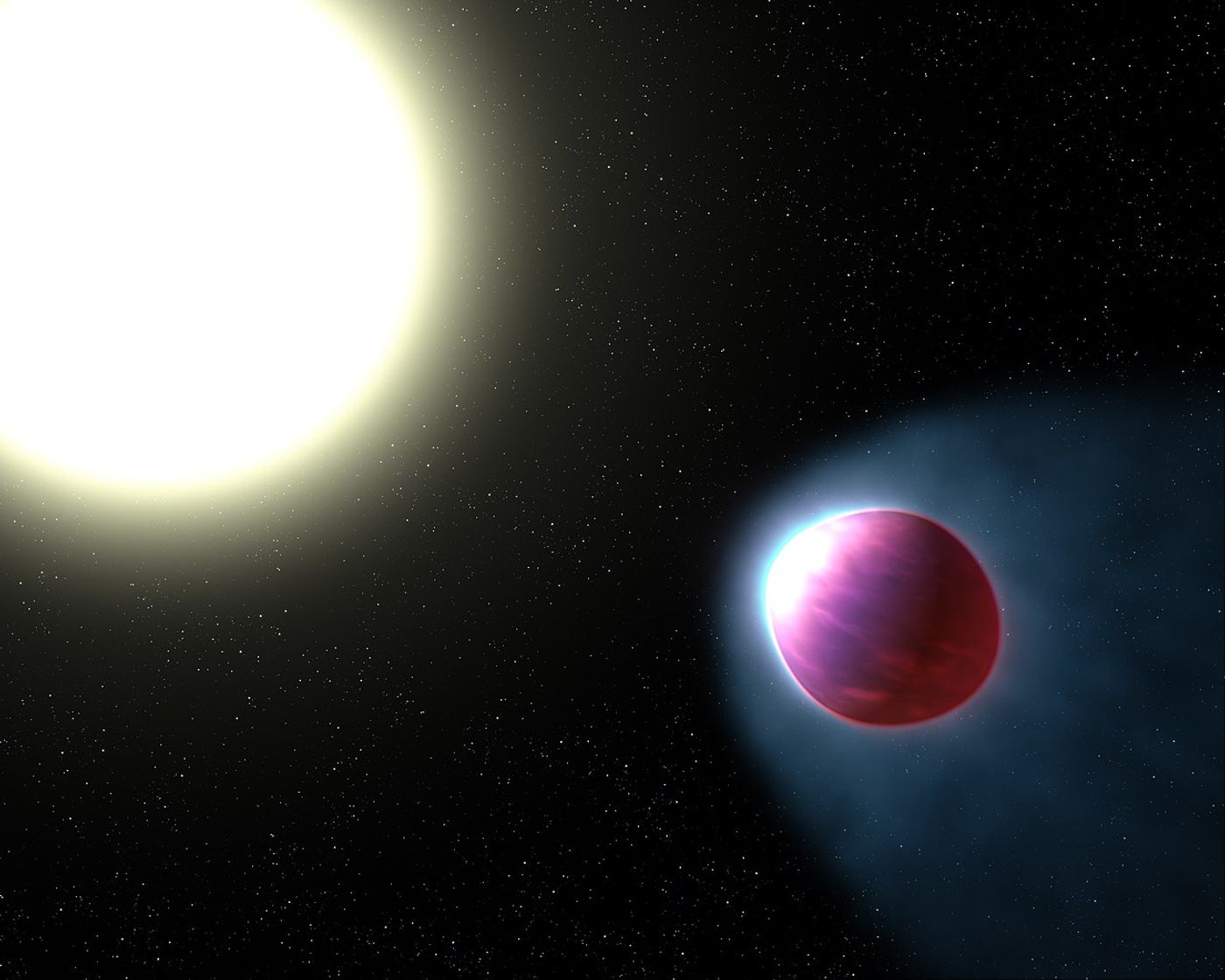Astronomers Use Hubble Data and Computational Modeling to Study Exoplanet Weather
Meteorologists on Earth struggle to predict the weather, but what about scientists trying to predict the weather on exoplanets that are light-years from Earth? This is what a recently accepted study to The Astrophysical Journal Supplement hopes to unveil as an international team of researchers used data from NASA’s Hubble Space Telescope to conduct a three-year investigation into weather patterns on WASP-121 b, which is a “hot Jupiter” that orbits its star in just over one day and located approximately 880 light-years from Earth. This study holds the potential to not only advance our understanding of exoplanets and their atmospheres, but also how we study them, as well.
Artist impression of WASP-121 b orbiting its host star. (Credit: NASA, ESA, and G. Bacon (STSci))
"The assembled dataset represents a significant amount of observing time for a single planet and is currently the only consistent set of such repeated observations," said Dr. Quentin Changeat, who is an Honorary Research Fellow in the Department of Astronomy at University College London and lead author of the study. “The information that we extracted from those observations was used to infer the chemistry, temperature, and clouds of the atmosphere of WASP-121 b at different times. This provided us with an exquisite picture of the planet changing over time."
For the study, the researchers combined observational data collected by Hubble in 2016, 2018, and 2019 of the atmospheric characteristics of WASP-121 b with computer models to analyze the variability of WASP-121 b’s atmosphere over time. The reason study was conducted was due to gas giants such as Jupiter, Saturn, Uranus, and Neptune having been observed to exhibit dynamic and fluctuating weather patterns over the course of a few months to several years. In the end, the researchers discovered the atmosphere of WASP-121 b also exhibits similar behavior, specifically pertaining to identifying large storms and cyclones, which have similarly been observed on Saturn.
"This is a hugely exciting result as we move forward for observing weather patterns on exoplanets," said Dr. Changeat. "Studying exoplanets' weather is vital to understanding the complexity of exoplanet atmospheres on other worlds, especially in the search for exoplanets with habitable conditions."
Going forward, Hubble is expected to be used to conduct further observations like WASP-121 b.
What new discoveries will researchers make about exoplanet atmospheres in the coming years and decades? Only time will tell, and this is why we science!
As always, keep doing science & keep looking up!









